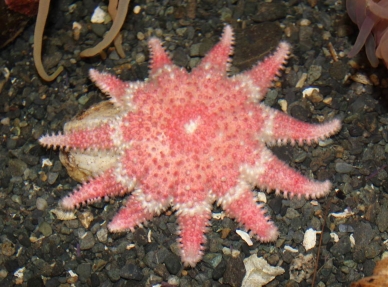Alaska Species Explorer
All
x
- – No known individuals remaining.
- – Known only to survive in captivity, or as a naturalized population outside its historic range.
- – Extremely high risk of extinction in the wild.
- – High risk of extinction in the wild.
- – High risk of endangerment in the wild.
- – Likely to become endangered in the near future.
- – Lowest risk. Does not qualify for a higher risk category. Widespread and abundant taxa are included in this category.
- – Not enough data to make an assessment of its risk of extinction.
- – Has not yet been evaluated against the criteria.
Rose Star
- – No known individuals remaining.
- – Known only to survive in captivity, or as a naturalized population outside its historic range.
- – Extremely high risk of extinction in the wild.
- – High risk of extinction in the wild.
- – High risk of endangerment in the wild.
- – Likely to become endangered in the near future.
- – Lowest risk. Does not qualify for a higher risk category. Widespread and abundant taxa are included in this category.
- – Not enough data to make an assessment of its risk of extinction.
- – Has not yet been evaluated against the criteria.
Circumpolar in the Northern Hemisphere, in the Pacific south to Sea of Okhotsk and to Puget Sound, Washington.
Breeding occurs from March to April and each star can spawn several times within a season. A female sea star can release more than 2000 eggs at a time.
This is a common sea star in the northern Pacific and there is no indication that their populations are unhealthy.
This species may have 8-16 arms, or rays, but 10-11 rays are most common. Many sea stars, including the rose star, have a commensal relationship with polychaete scale worms, the sea star provides food and protection to the worm.
- This attractive sea star gets its name from the red, pink or purple radiating rings of color on its back.
- A relatively fast sea star, the rose star has been clocked at a blistering 70cm/min!








